Minneapolis is all about arts and culture (and yes, sports too!). The city takes pride in its world-class museums, galleries, performance venues and more. It pulses with vibrant creative energy and is a magnet for visitors eager to explore its offerings.
Outdoor art, in particular, has made a name for itself in Minneapolis. You’ll find hidden street gems and murals throughout the town, adding color, whimsy and diverse expressionism to the scene.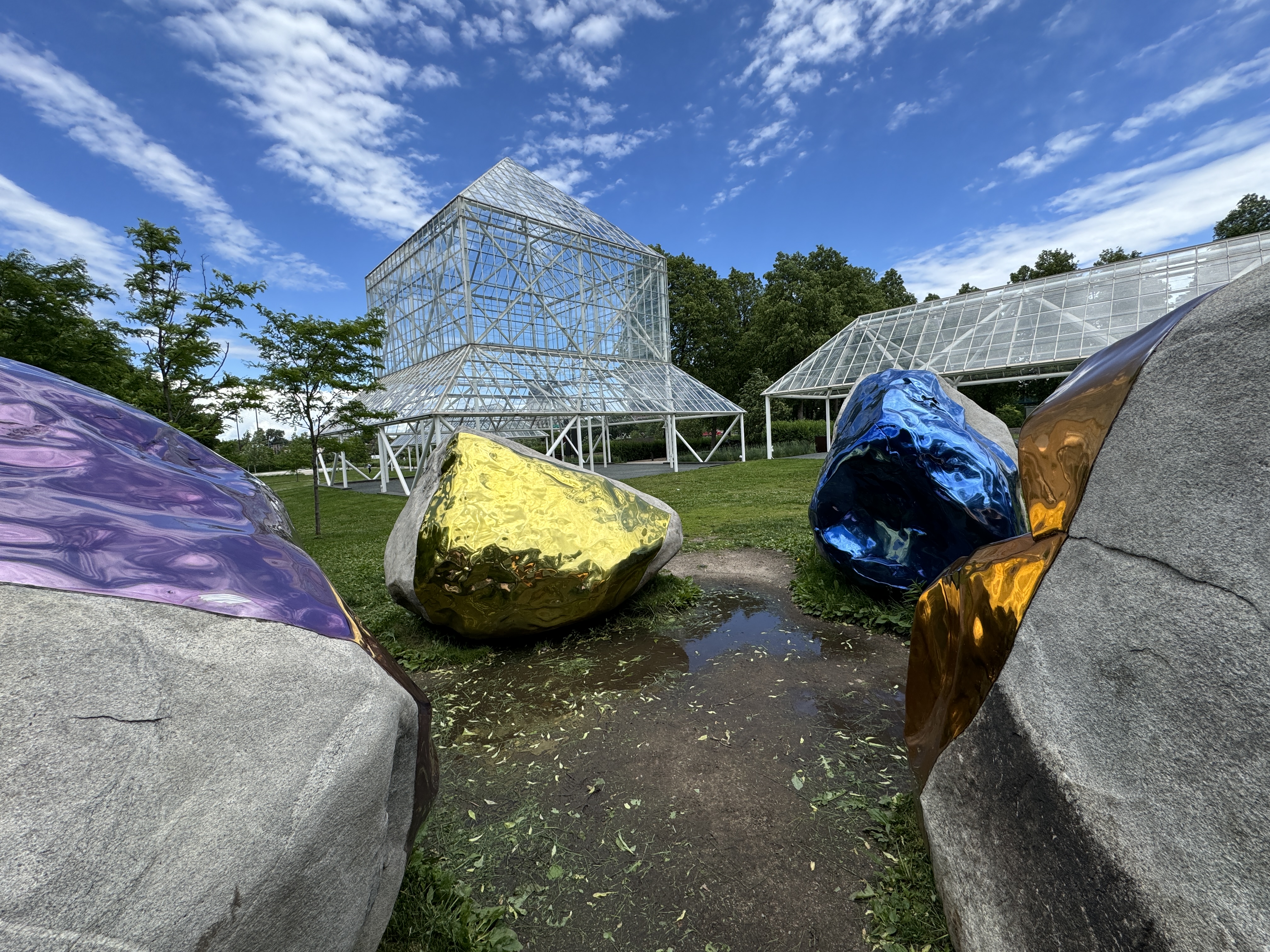 And then there’s the Minneapolis Sculpture Garden, a top-notch attraction for visitors of all ages and interests. When it opened in 1988, the garden was one of the first public/private urban sculpture parks of its kind. It has grown over the years and today, it occupies eleven scenic acres in the heart of the city.
And then there’s the Minneapolis Sculpture Garden, a top-notch attraction for visitors of all ages and interests. When it opened in 1988, the garden was one of the first public/private urban sculpture parks of its kind. It has grown over the years and today, it occupies eleven scenic acres in the heart of the city.
Exploring this popular spot is free and open year-round. Though it is part of the famed Walker Art Center, the outdoor exhibit is a destination in itself. It has drawn millions of people, who gravitate towards its roughly sixty sculptures on the expansive property.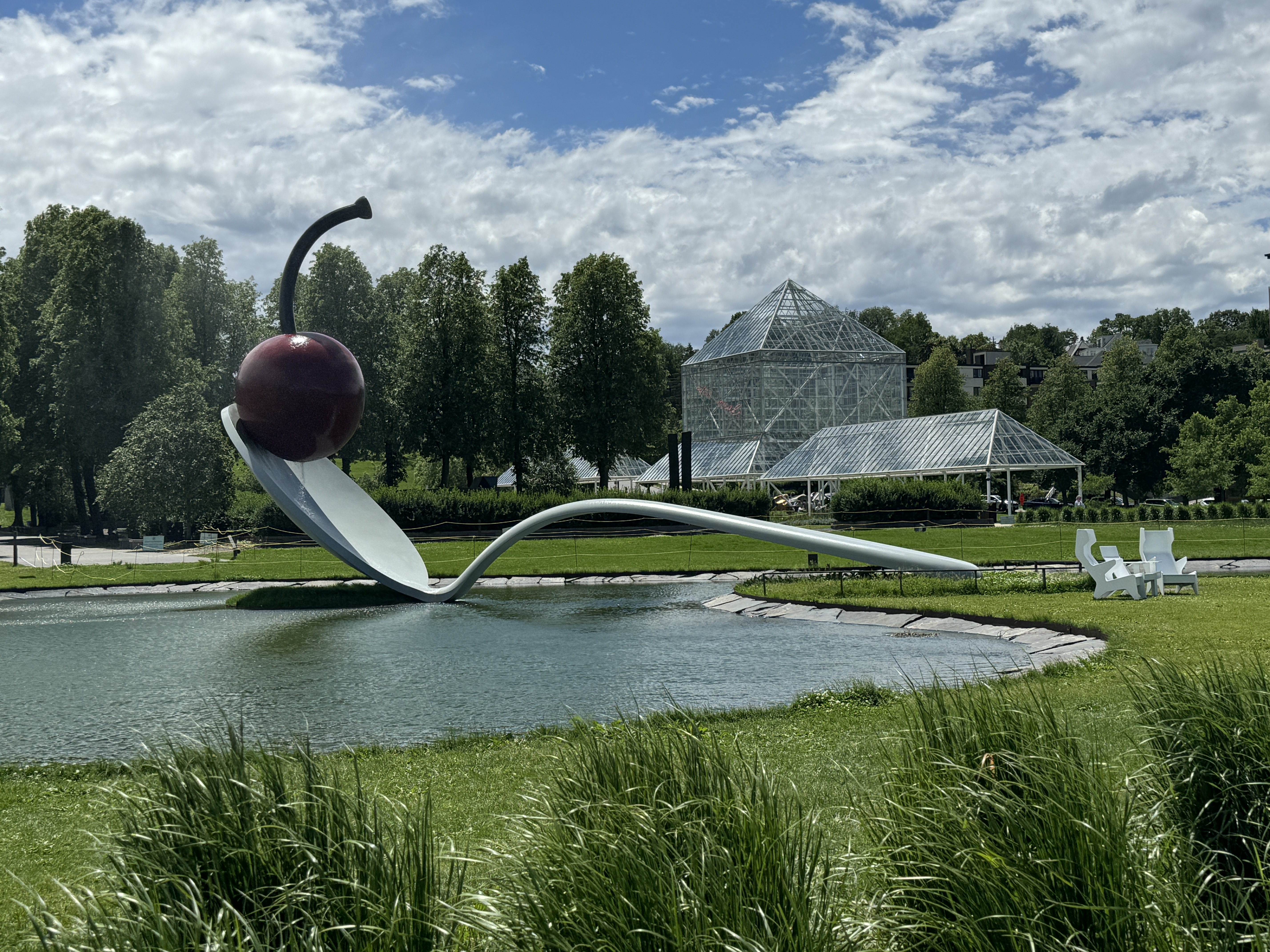 There are many highlights in the garden. One of the most prominent and beloved pieces is “Spoonbridge and Cherry” by Claes Oldenburg and his wife Coosje van Bruggen. You can’t miss it as it’s enormous! The sculpture is built from stainless steel and aluminum and the spoon weighs nearly 6,000 pounds, while the cherry checks in at about 1,200 pounds. The cherry’s stem acts as a fountain, which sprays into the bowl of the spoon and off into the pond beneath.
There are many highlights in the garden. One of the most prominent and beloved pieces is “Spoonbridge and Cherry” by Claes Oldenburg and his wife Coosje van Bruggen. You can’t miss it as it’s enormous! The sculpture is built from stainless steel and aluminum and the spoon weighs nearly 6,000 pounds, while the cherry checks in at about 1,200 pounds. The cherry’s stem acts as a fountain, which sprays into the bowl of the spoon and off into the pond beneath.
Purportedly, the spoon was Oldenburg’s idea, who had a perchance for drawing spoons ever since he was inspired by one resting on a piece of fake chocolate. The cherry was van Bruggen’s contribution, as she wanted to use it as a comment on the garden’s otherwise “staid” layout. Both artists were known for their bigger-than-life sculptures of ordinary objects.%20by%20Katharina%20Fritsch.%20Photo%20by%20Debbie%20Stone.JPG) Katharina Fritsch’s piece, “Hahn/Cock,” is another scene stealer. Can we say, “Cock-a-doodle-dude!” This colossal rooster, in intense, ultramarine blue, stands proud as can be at 23-feet high. Fritsch, too, is a sculptor who uses everyday things as the subjects of her art.
Katharina Fritsch’s piece, “Hahn/Cock,” is another scene stealer. Can we say, “Cock-a-doodle-dude!” This colossal rooster, in intense, ultramarine blue, stands proud as can be at 23-feet high. Fritsch, too, is a sculptor who uses everyday things as the subjects of her art.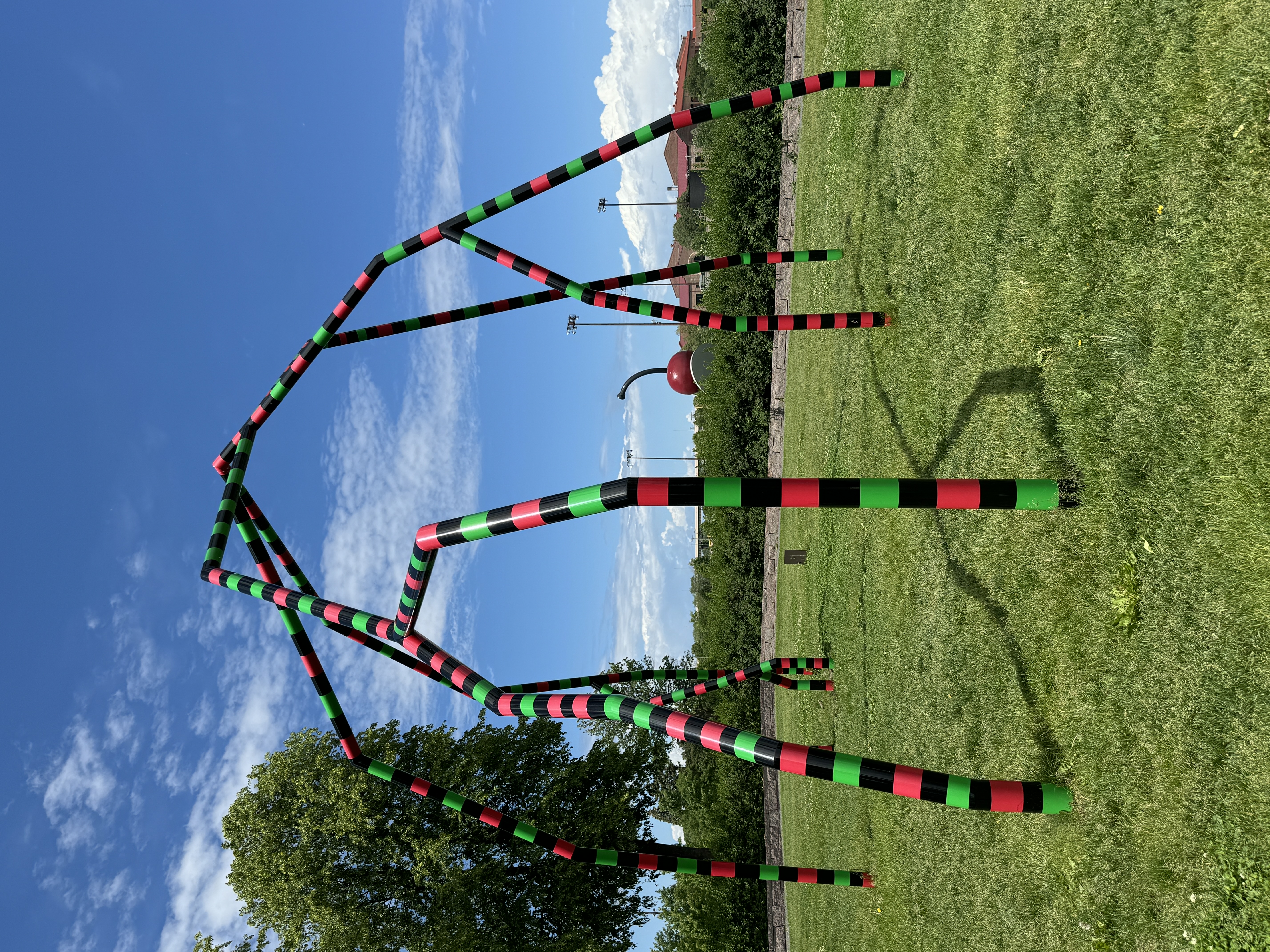 Eva Rothschild’s abstract piece, “Empire,” is an angular, multidirectional archway. This geometric giant might remind you of a playground set sans the swings. Or perhaps it’s a spider on steroids with green and red stripes. Or maybe, bolts of lightning…
Eva Rothschild’s abstract piece, “Empire,” is an angular, multidirectional archway. This geometric giant might remind you of a playground set sans the swings. Or perhaps it’s a spider on steroids with green and red stripes. Or maybe, bolts of lightning…
It’s said that “all you need is love,” and here you’ll find it with Robert Indiana’s most iconic work of art, “Love.” Indiana has made many of these sculptures in assorted variations, which have been displayed in different cities around the world, including New York, Philadelphia, London and Tokyo. Sometimes he paints them, but this one is made of a type of steel that’s meant to look rusty, but doesn’t require paint. Visitors are often intrigued by Judith Shea’s “Without Words.” It consists of three bronze, marble and limestone pieces – a sculpted head fragment that Shea modeled after an ancient sculpture of Egyptian Queen Tiye, a rumpled overcoat, and a dress form that the artist has patterned after a dinner dress that belonged to her mother. This juxtaposition of pieces creates a narrative that could involve history and the human form, but the fun is really in making up your own story to fit this tableau.
Visitors are often intrigued by Judith Shea’s “Without Words.” It consists of three bronze, marble and limestone pieces – a sculpted head fragment that Shea modeled after an ancient sculpture of Egyptian Queen Tiye, a rumpled overcoat, and a dress form that the artist has patterned after a dinner dress that belonged to her mother. This juxtaposition of pieces creates a narrative that could involve history and the human form, but the fun is really in making up your own story to fit this tableau.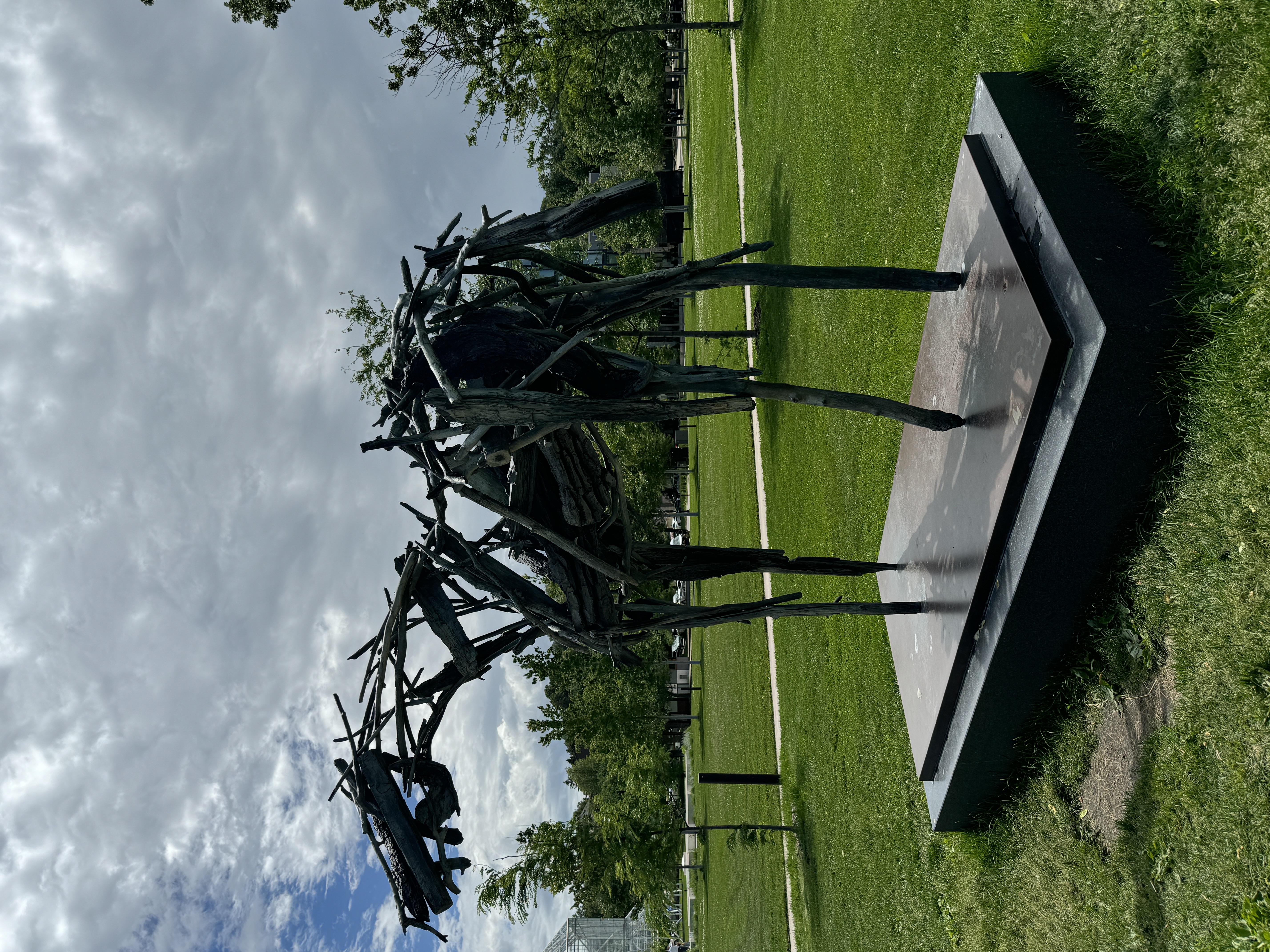 You might think that “Woodrow,” by Deborah Butterfield, is a horse skeleton made of wood, but it’s actually bronze pieces welded together to create the illusion that each element is an actual piece of wood. You’ll notice people looking very closely at the sculpture once they read that it’s a bronze because it definitely has the look of a ghostly, stick figure horse. Supposedly, the artist named the piece after her father-in-law.
You might think that “Woodrow,” by Deborah Butterfield, is a horse skeleton made of wood, but it’s actually bronze pieces welded together to create the illusion that each element is an actual piece of wood. You’ll notice people looking very closely at the sculpture once they read that it’s a bronze because it definitely has the look of a ghostly, stick figure horse. Supposedly, the artist named the piece after her father-in-law.
Mark d. Suvero’s “Arikidea” is another spider-like structure. And actually, the artist based his piece on an arachnid, a creature he admired for its movement. He used I-beams from demolished New York skyscrapers to assemble this massive installation, which measures 26 feet wide and 42 feet high. In the middle of it is a wooden seat that swings playfully in the breeze. It’s an invitation to sit. Go ahead and swing to your heart’s content!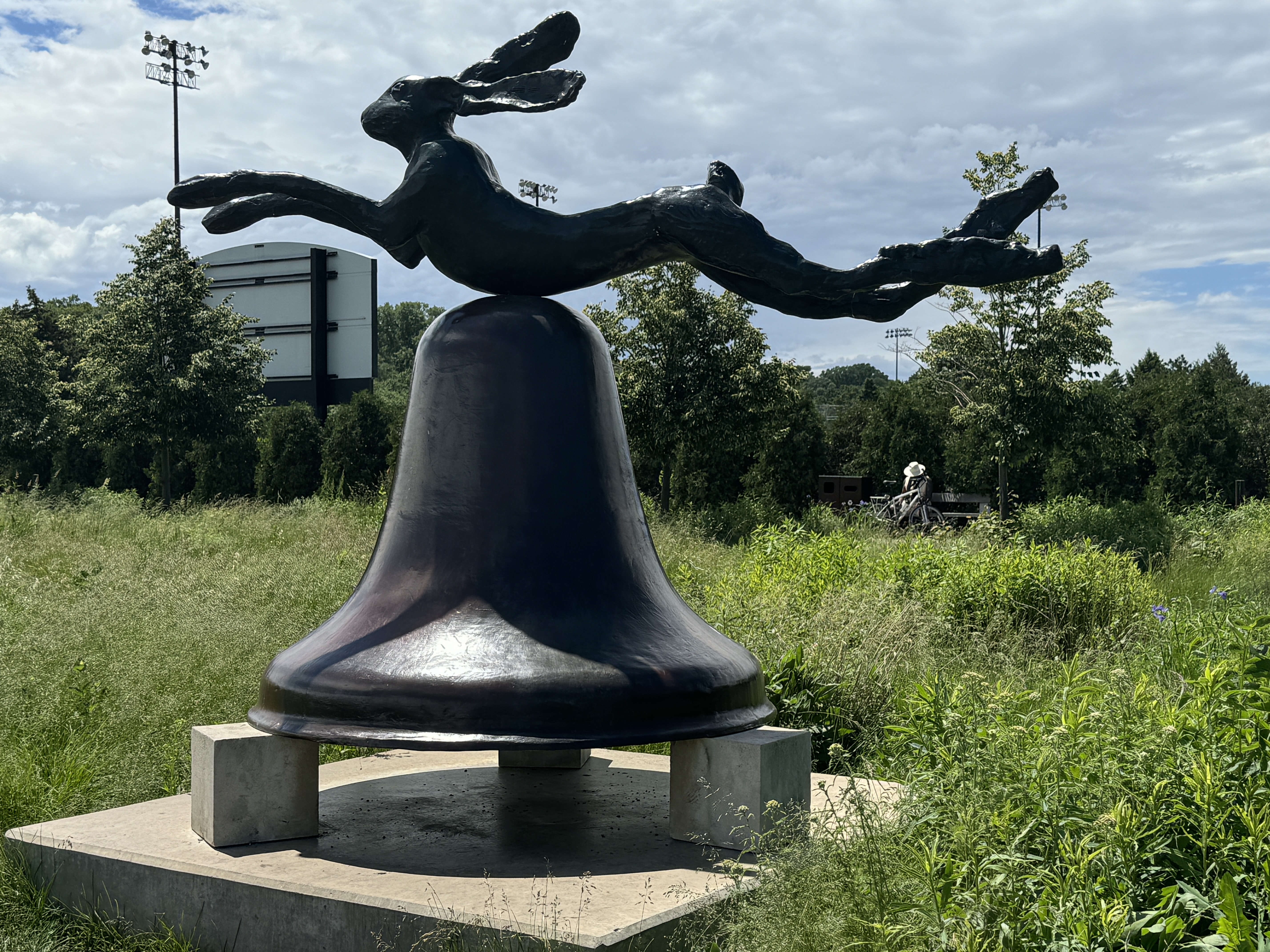 An exuberant, bounding hare balances atop a classically-formed bell in Barry Flanagan’s “Hare on Bell on Portland Stone Piers.” This image offers a fun study in contrasts, from the energetic vitality of the animal to the elegant bell. The artist, who began sculpting bronze hares in the 1970s, is known for placing them in all states of motion and rest. He often makes tongue-in-cheek, humorous references to sculpture masterworks. In his “Larger Thinker on Computer,” for example, he pays homage to Auguste Rodin’s “The Thinker” by putting a hare in the famous pose, but then placing him on top of a computer.
An exuberant, bounding hare balances atop a classically-formed bell in Barry Flanagan’s “Hare on Bell on Portland Stone Piers.” This image offers a fun study in contrasts, from the energetic vitality of the animal to the elegant bell. The artist, who began sculpting bronze hares in the 1970s, is known for placing them in all states of motion and rest. He often makes tongue-in-cheek, humorous references to sculpture masterworks. In his “Larger Thinker on Computer,” for example, he pays homage to Auguste Rodin’s “The Thinker” by putting a hare in the famous pose, but then placing him on top of a computer.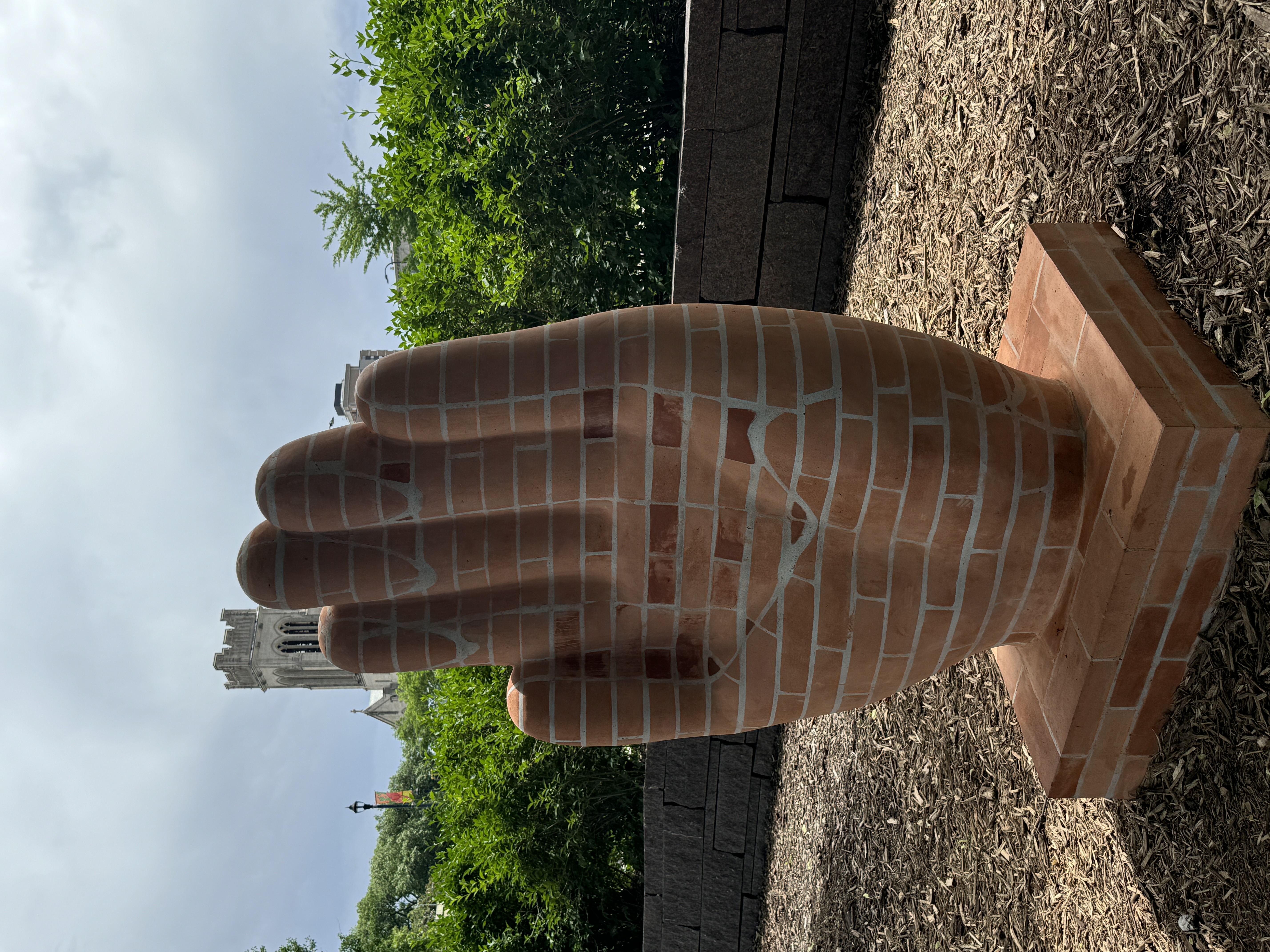 Wave hello to “Hand for Minneapolis” by Judith Hopf. Created using a combo of traditional and digital fabrication techniques, this piece shines a light on the manual labor involved in making everyday objects that we often take for granted. The sculpture celebrates the importance of the human touch in our world of automation and technology.
Wave hello to “Hand for Minneapolis” by Judith Hopf. Created using a combo of traditional and digital fabrication techniques, this piece shines a light on the manual labor involved in making everyday objects that we often take for granted. The sculpture celebrates the importance of the human touch in our world of automation and technology.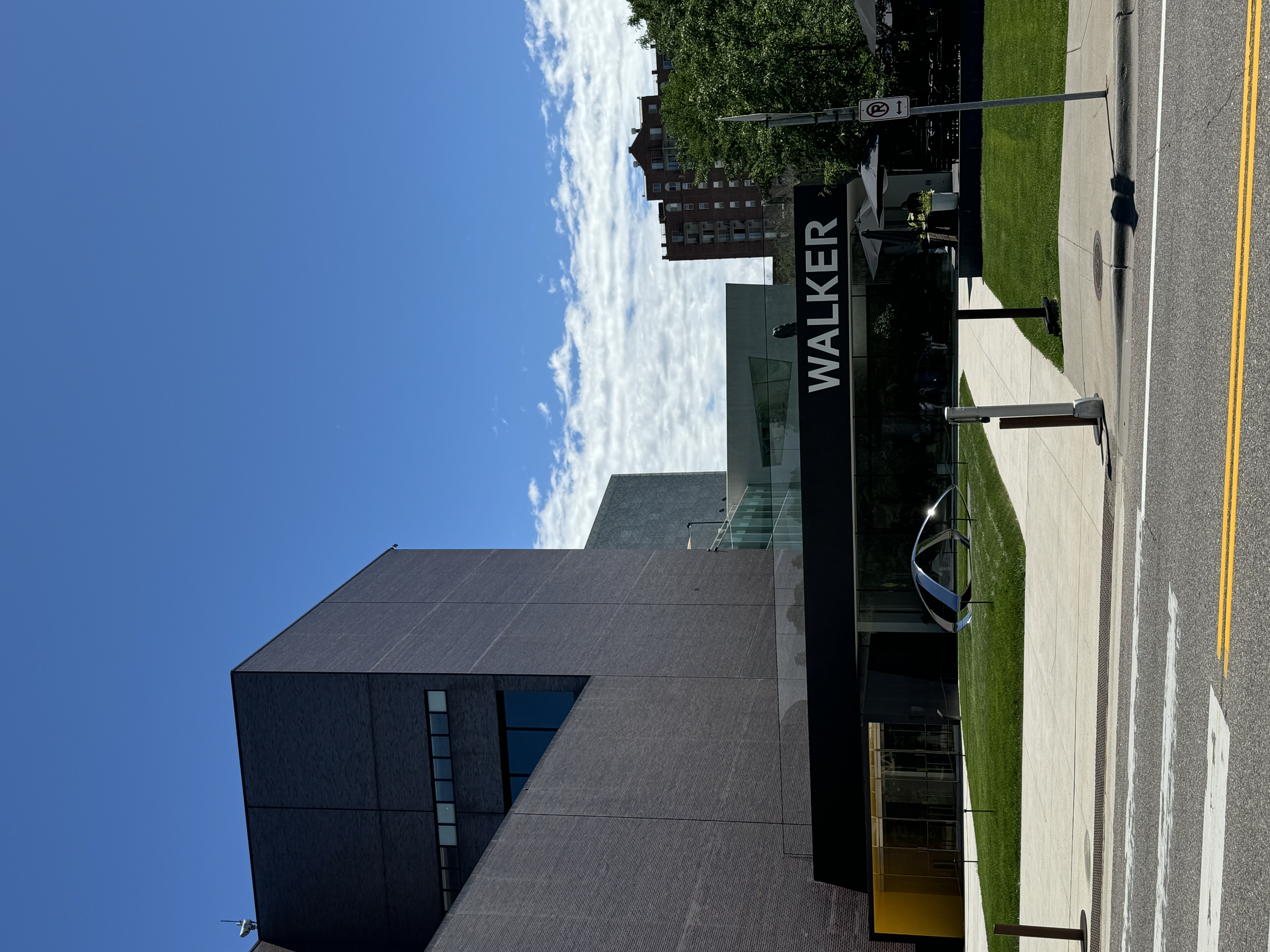 If after strolling through the garden, you’re primed to view more art, head across the street to the Walker Art Center. This nationally recognized museum has an incredible permanent collection of over 13,000 contemporary and modern art pieces, from paintings, prints and sculpture to photography, costumers, books and more. You’ll need some time to peruse the eleven galleries!
If after strolling through the garden, you’re primed to view more art, head across the street to the Walker Art Center. This nationally recognized museum has an incredible permanent collection of over 13,000 contemporary and modern art pieces, from paintings, prints and sculpture to photography, costumers, books and more. You’ll need some time to peruse the eleven galleries!
Minneapolis Sculpture Garden | Walker Art Center


%20by%20Katharina%20Fritsch.%20Photo%20by%20Debbie%20Stone.JPG)











